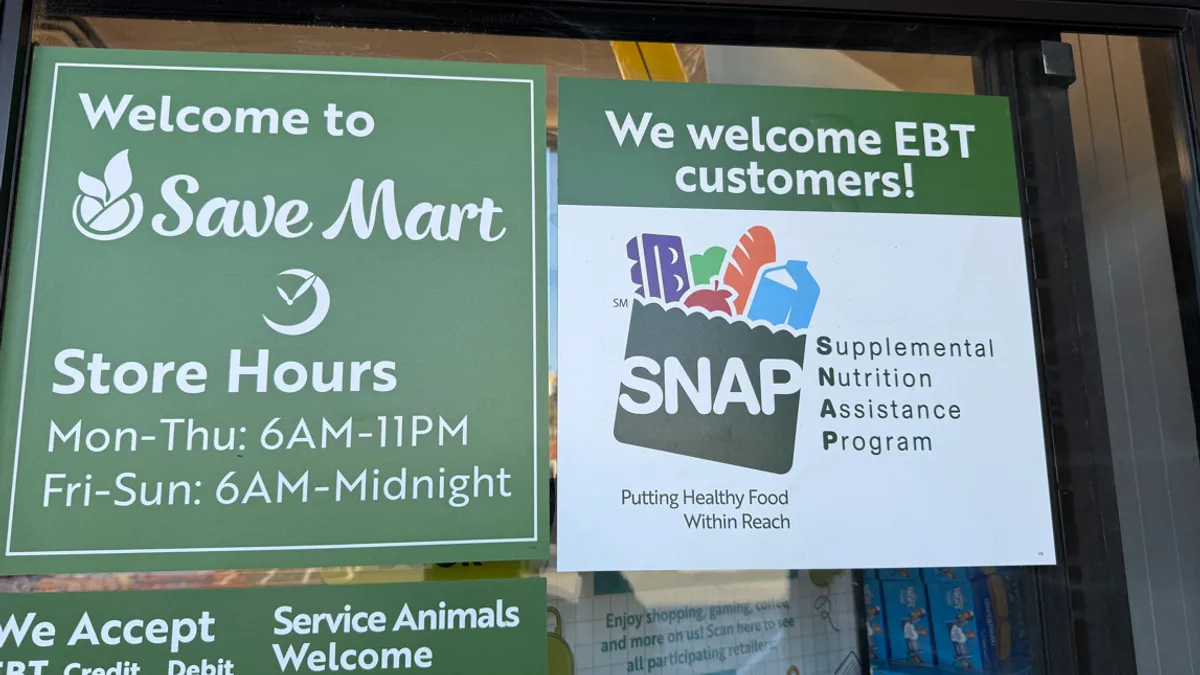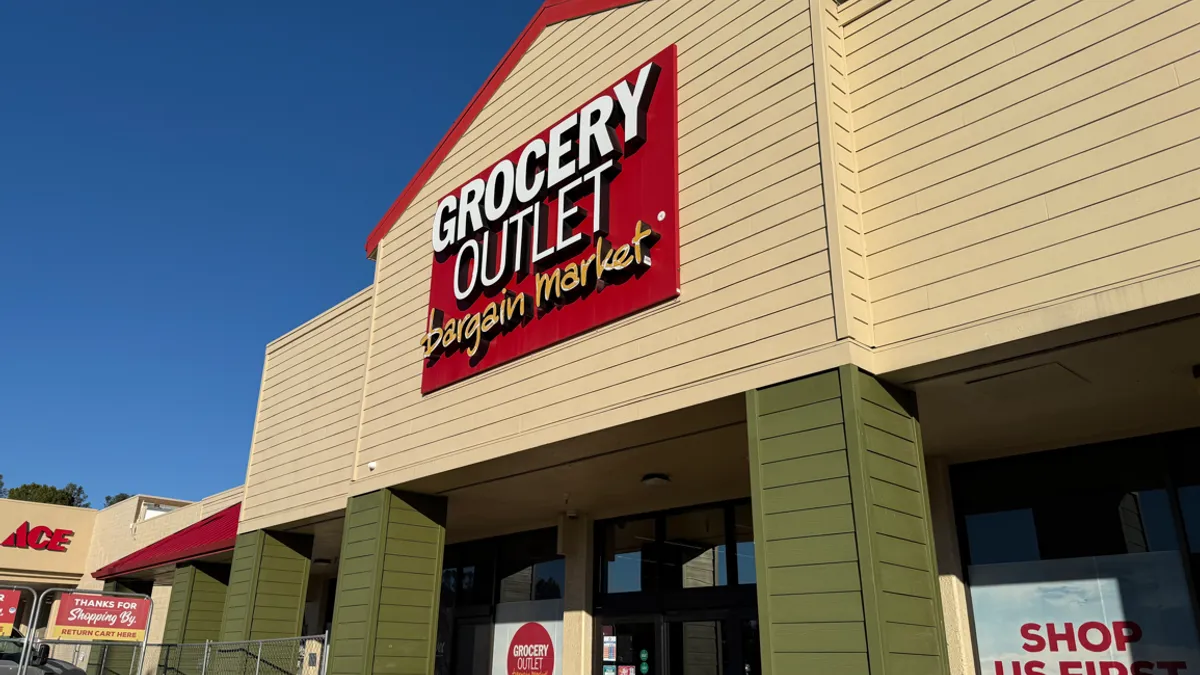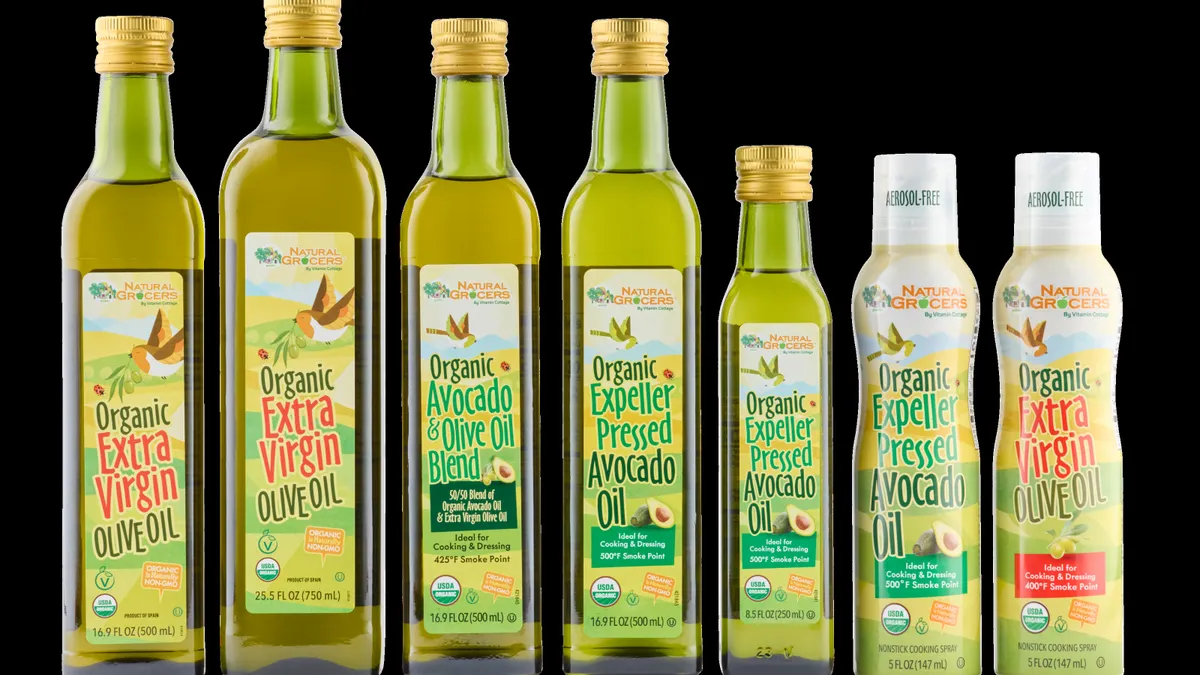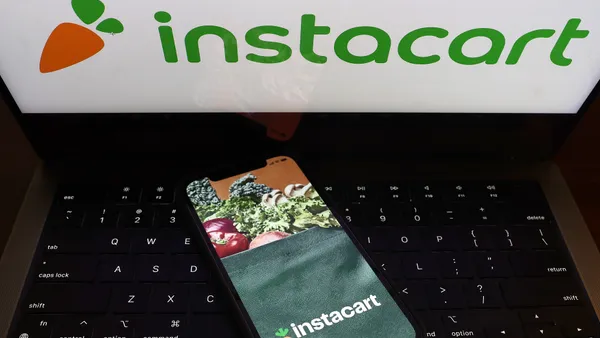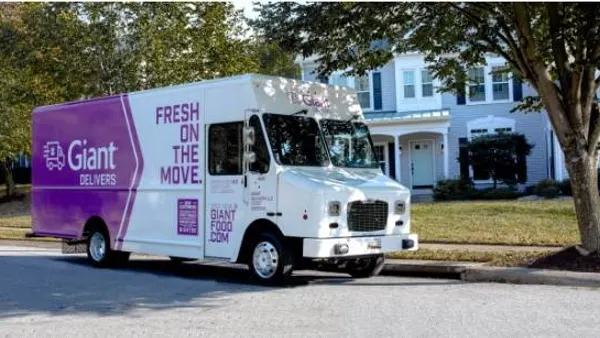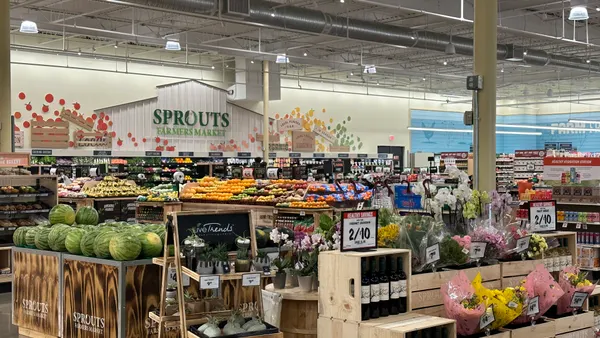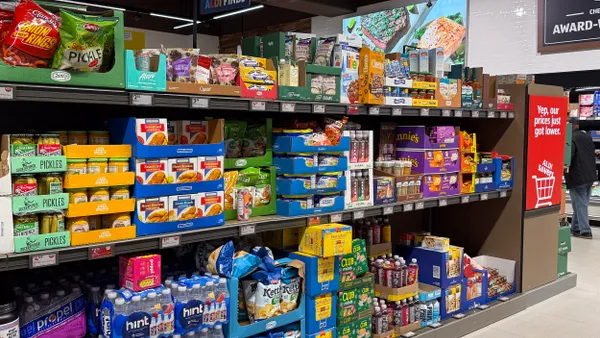The Trump administration plans to use contingency funds to partially cover SNAP benefits for November, federal government officials said in court documents. But SNAP participants will likely face delays in getting the federal funds added to their EBT cards — likely depressing SNAP sales at grocers.
The USDA’s decision results from two separate federal judges’ orders on Friday for the USDA to reinstate SNAP benefits after the Trump administration refused to tap emergency funding for the aid program amid the ongoing government shutdown. Saturday marked the first time that federal funding has lapsed for the food assistance program.
Food, Nutrition and Consumer Services, the agency within the USDA that is responsible for SNAP, plans to provide “reduced” SNAP benefits for November by fully using what’s left in contingency funds, FNS Deputy Undersecretary Patrick A. Penn said in a court filing to the U.S. District Court for the District of Rhode Island.
Penn said that FNS had earlier this year used $750 million from a $6 billion contingency fund and plans to tap another $600 million for other purposes, leaving $4.65 billion to use for SNAP. That’s roughly half of the approximately $8 billion that the federal government spent on monthly SNAP benefits last year, according to USDA data.
The USDA considered but ultimately decided not to tap tariff revenue that helps support child nutrition programs, Penn said. When the agency tapped $300 million worth of these funds in October to continue funding WIC, it declined to do so at the time for SNAP because of the much larger costs associated with SNAP and because doing so would “stray from Congressional intent,” Penn said.
Even though the USDA has agreed to partially fund SNAP, Penn said that states will likely face “procedural difficulties” with handling the benefits. The USDA is preparing to notify states on Monday with more details on the reduced SNAP allotments, and the states will then need to calculate the new benefit amounts for each eligible household. As a result, states will need to recode their eligibility systems.
“Given the variation among State systems, some of which are decades old, it is unclear how many States will complete the changes in an automated manner with minimal disruption versus manual overrides or computations that could lead to payment errors and significant delays,” Penn noted.
The USDA expects the process to take “anywhere from a few weeks to up to several months” for at least some states, without specifying how many or which ones, Penn said.
In the lawsuit filed in Rhode Island against the Trump administration, Black Sheep Market, one of the plaintiffs, said that SNAP purchases account for about 40% of its roughly $50,000 to $60,000 in weekly sales. For the independently owned meat market, which has two stores in South Carolina, losing SNAP sales could harm its relationships with suppliers, disrupt its day-to-day operations and result in a cut to employees’ hours, the complaint said.
On Monday, the United Food and Commercial Workers International Union urged the USDA to fully fund SNAP benefits for November.
“Only covering half of a family’s food assistance still leaves them vulnerable to hunger,” UFCW International President Milton Jones said in a statement.
Amid the federal funding chaos, at least nine states and Washington, D.C., have set up temporary avenues to provide direct financial assistance to SNAP participants, meaning that grocers in those states may see some SNAP sales this month. Meanwhile, several grocers, including Sprouts Farmers Market and H-E-B, unveiled last week efforts to combat food insecurity.
A few days ago, the USDA posted a reminder on its website about the SNAP Equal Treatment Rule, which requires SNAP-authorized retailers to offer the same prices to SNAP consumers and non-SNAP consumers. “Offering discounts or services only to SNAP paying consumers is a SNAP violation unless you have a SNAP Equal Treatment waiver,” the USDA said in the notice.


